 W
WAfrikaner Calvinism is a cultural and religious development among Afrikaners that combined elements of seventeenth-century Calvinist doctrine with a "chosen people" ideology based in the Bible. It had origins in ideas espoused in the Old Testament of the Jews as the chosen people.
 W
WColoured South Africans or Cape Coloureds are an ethnic group composed primarily of persons of mixed race. Although Coloureds form a minority group within South Africa, they are the predominant population group in the Western Cape.
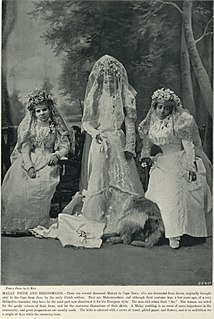 W
WCape Malays are an ethnic group or community in South Africa. The name is derived from the Cape of Good Hope and the Malay race people originally from Indonesian/Malay archipelago, mostly from the Dutch East Indies colony, a Dutch colony for several centuries, and Dutch Malacca, which the Dutch held from 1641 to 1824. The community's earliest members were enslaved Javanese transported by the Dutch East India Company (VOC). Key figures in the arrival of Islam were Muslim leaders who resisted the company's rule in Southeast Asia. Some, like Sheikh Yusuf, were exiled to South Africa by the company, which founded and used Cape Town as a resupply station for ships travelling between Europe and Asia. They were followed by slaves from various other Southeast Asian regions, and political dissidents and Muslim religious leaders who opposed the Dutch presence in what is now Indonesia. During the eighteenth century, Malay was the lingua franca of enslaved and free Muslims, though they came from East Africa, Madagascar, and India, as well as Indonesia. The use of the Malay language established the moniker "Malay" for all Muslims irrespective of their geographic origins. By the 19th century, the term was used to describe anyone at the Cape who was a practicing Muslim, while Afrikaans had overtaken Malay as the group's lingua franca.
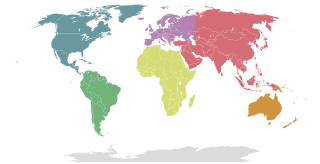 W
WChristianity is the dominant religion in South Africa, with almost 80% of the population in 2001 professing to be Christian. No single denomination predominates, with mainstream Protestant churches, Pentecostal churches, African initiated churches, and the Catholic Church all having significant numbers of adherents. Importantly, there is significant and sustained syncretism with African Traditional Religion among most of the self-professed Christians in South Africa.
 W
WThe Republic of China (Taiwan), commonly known as Taiwan has a Christian minority, making up about less than 3.9% of its population. Roughly half of Taiwan's Christians are Catholic, and half Protestant. Due to its minority status, Christianity has had only a small insignificant influence on the island nation's Han Chinese majority culture, which is practiced by over 97% of Taiwan’s population, and development. Although a few individual Christians have devoted their lives to charity work in Taiwan as illustrated by such exemplary figures as George Leslie Mackay (Presbyterian) and Nitobe Inazō.
 W
WIndonesia was the fourth-largest producer of coffee in the world in 2014. Coffee cultivation in Indonesia began in the late 1600s and early 1700s, in the early Dutch colonial period, and has played an important part in the growth of the country. Indonesia is geographically and climatologically well-suited for coffee plantations, near the equator and with numerous interior mountainous regions on its main islands, creating well-suited microclimates for the growth and production of coffee.
 W
WColoureds are a multiracial ethnic group native to Southern Africa who have ancestry from more than one of the various populations inhabiting the region, including Khoisan, Bantu, Afrikaner, Whites, Austronesian, East Asian or South Asian. Because of the combination of ethnicities, different families and individuals within a family may have a variety of different physical features.
 W
WThe Compagnie van De Moucheron was a pre-company and precursor of the Verenigde Oost Indische Compagnie from the Republic of the Seven United Netherlands that was founded by Balthazar de Moucheron, a ship owner from Antwerp in the Southern Netherlands. After the fall of Antwerp he moved his business to Zeeland. The fleet of the Compagnie van De Moucheron was made up of three ships, 'Ram', 'Schaap' (Sheep) and the pinasse 'Lam' (Lamb) and was headed by Joris van Spilbergen. Its fleet left on 5 May 1601 and returned to the Republic of the Seven United Netherlands in 1604.
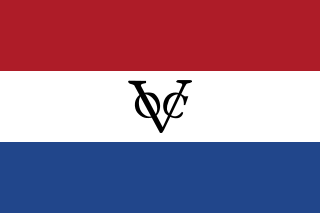 W
WThe Cape Colony was a United East India Company (VOC) colony in Southern Africa, centered on the Cape of Good Hope, whence it derived its name. The original colony and its successive states that the colony was incorporated into occupied much of modern South Africa. Between 1652 and 1691 a Commandment, and between 1691 and 1795 a Governorate of the United East India Company (VOC). Jan van Riebeeck established the colony as a re-supply and layover port for vessels of the VOC trading with Asia. The Cape came under VOC rule from 1652 to 1795 and again from 1803 to 1806. Much to the dismay of the shareholders of the VOC, who focused primarily on making profits from the Asian trade, the colony rapidly expanded into a settler colony in the years after its founding.
 W
WThe Dutch East India Company had a presence in the Malay archipelago) from 1603, when the first trading post was established, to 1800, when the bankrupt company was dissolved, and its possessions nationalised as the Dutch East Indies.
 W
WMauritius was an official settlement of the Dutch East India Company on the island of Mauritius between 1638 and 1710, and used as a refreshing station for passing ships. It was already frequented by Dutch ships from 1598 onwards, but only settled in 1638, to prevent the French and the British from settling on the island.
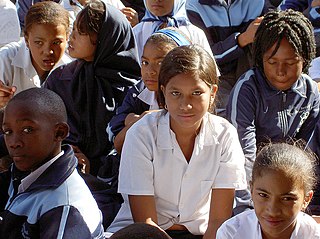 W
WEducation in South Africa is governed by two national departments, namely the department of Basic Education (DBE), which is responsible for primary and secondary schools, and the department of Higher Education and Training (DHET), which is responsible for tertiary education and vocational training. Prior to 2009, these two departments were represented in a single Department of Education.
 W
WThe Flying Dutchman is a legendary ghost ship which was said to never be able to make port, doomed to sail the oceans forever. The myth is likely to have originated from the 17th-century Golden Age of the Dutch East India Company (VOC) and Dutch maritime power. The oldest extant version of the legend has been dated to the late 18th century. According to the legend, if hailed by another ship, the crew of the Flying Dutchman was said to try to send messages to land, or to people long dead. Purported sightings in the 19th and 20th centuries claimed that the ship glowed with a ghostly light. In ocean lore, the sight of this phantom ship is a portent of doom.
 W
WThe island of Taiwan, also commonly known as Formosa, was partly under colonial rule by the Dutch Republic from 1624 to 1662. In the context of the Age of Discovery, the Dutch East India Company established its presence on Formosa to trade with the Ming Empire in China and Tokugawa shogunate in Japan, and also to interdict Portuguese and Spanish trade and colonial activities in East Asia.
 W
WThe early history of the South African wine industry can be traced to the founding of a supply station at the Cape of Good Hope by the Dutch East India Company. Jan van Riebeeck was given the task of managing the station and planting vineyards to produce wine and grapes in the Wijnberg ; that could be used to ward off scurvy for sailors continuing on their voyages along the spice route. In 1685, another Cape Governor, Simon van der Stel, purchased a large 750-hectare (1,900-acre) estate, founding what later became the world-renowned Constantia wine estate. In the 19th century, South Africa fell under British rule which proved lucrative for the wine industry as South African wine flowed into the British market. This prosperity lasted until the 1860s when the Cobden–Chevalier Treaty signed by the Palmerston government and France reduced the preferential tariffs that benefited South African wine in favor of French wine exports.
 W
WMany people of European heritage in South Africa are descended from Huguenots. Most of these originally settled in the Cape Colony, but were absorbed into the Afrikaner and Afrikaans-speaking population, because they had religious similarities to the Dutch colonists.
 W
WIslam in South Africa is a minority religion, practised by roughly 1.5-2.0% of the total population. It is also one of the fastest growing religion in South Africa. Islam in South Africa has grown in three phases. The first phase brought the earliest Muslims as part of the involuntary migration of slaves, political prisoners, and political exiles from Africa and Asia that lasted from about 1652 to the mid-1800s. The second phase was the arrival of indentured labourers from British India to work in the sugar-cane fields in Natal between 1860 and 1868, and again from 1874 to 1911. Of the approximately 176,000 Indians of all faiths who were transported to the Natal province, almost 7-10% of the first shipment were Muslims.
 W
WThe Meermin slave mutiny took place in February 1766 and lasted for three weeks. Meermin was one of the Dutch East India Company's fleet of slave ships. Her final voyage was cut short by the mutiny of her cargo of Malagasy people, who had been sold to Dutch East India Company officials on Madagascar to be used as company slaves in its Cape Colony in southern Africa. During the mutiny half the ship's crew and almost 30 Malagasy lost their lives.
 W
WMegacorporation, mega-corporation, or megacorp, a term popularized by William Gibson, derives from the combination of the prefix mega- with the word corporation. It has become widespread in cyberpunk literature. It refers to a corporation that is a massive conglomerate, holding monopolistic or near-monopolistic control over multiple markets. Megacorps are so powerful that they can ignore the law, possess their own heavily armed private armies, be the operator of a privatized police force, hold "sovereign" territory, and even act as outright governments. They often exercise a large degree of control over their employees, taking the idea of "corporate culture" to an extreme. Such organizations as a staple of science fiction long predate cyberpunk, appearing in the works of writers such as Philip K. Dick, Thea von Harbou, Robert A. Heinlein, Robert Asprin, and Andre Norton. The explicit use of the term in the Traveller science fiction roleplaying game from 1977 predates Gibson's use of it.
 W
WProtestantism is one of the six approved religions in Indonesia, the others being Islam, Roman Catholicism, Hinduism, Buddhism, and Confucianism. It constitutes the bulk of Christianity in Indonesia, which is the second largest religion in the country after Islam. According to CIA statistic, in 2000 5.7% of the population of Indonesia were Protestant. A nationwide census of 2010 noted almost 7% (16,530,000) of the population considering themselves Protestant, largest in Southeast Asia.
 W
WProtestantism in South Africa accounted for 73.2% of the population in 2010. Its history dates back to the initial European settlement on the Cape of Good Hope in 1652. Since then, Protestantism has been the predominant religion of the European settlers and today, of South Africa as a whole.
 W
WAnglican and other Protestant missionaries arrived at Sri Lanka during the early 19th century, when the British took control of Sri Lanka from the Dutch. The oldest Protestant church in Sri Lanka is the Christian Reformed Church in Sri Lanka, formerly the Dutch Reformed Church in Sri Lanka, has over 30 congregations and more than 5,000 members.
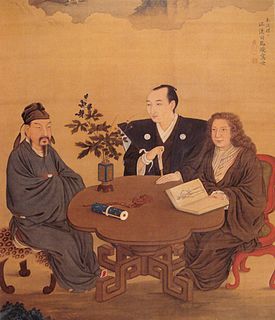 W
WRangaku is a body of knowledge developed by Japan through its contacts with the Dutch enclave of Dejima, which allowed Japan to keep abreast of Western technology and medicine in the period when the country was closed to foreigners, 1641–1853, because of the Tokugawa shogunate's policy of national isolation (sakoku).
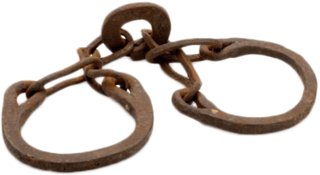 W
WSlavery in Southern Africa existed until the abolition of slavery in the Cape Colony on 1 January 1834.
 W
WThe Veerse Compagnie was a pre-company from the Republic of the Seven United Netherlands that was founded by Balthazar de Moucheron, a ship owner from Antwerp in the Southern Netherlands. After the fall of Antwerp he moved his business to Zeeland. The fleet of the Veerse Compagnie was made up of two ships; 'Leeuw' (Lion) and 'Leeuwin' (Lioness) and was headed by Cornelis Houtman. Its fleet left from Veere on 28 March 1598 and returned to the Republic of the Seven United Netherlands in 1600.
 W
WA voorcompagnie (pre-company) is the naming given to the trading companies from the Republic of the Seven United Netherlands that traded in Asia between 1594 and 1602, before they all merged to form the Dutch East India Company (VOC). The pre-companies were financed by merchants from the Northern Netherlands and rich immigrants from the Southern Netherlands. Because of the deadly competition, the government forced the smaller trading companies to unite and form the (United) East India Company, that on its turn received the exclusive rights for the trade with Asia for the following 21 years.